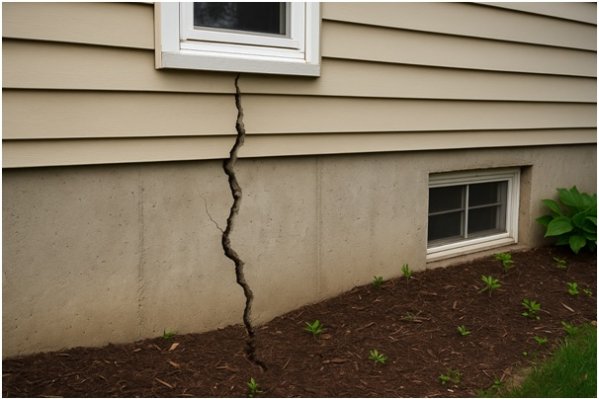The beauty of the Canadian climate lies in its variety. From the wet coasts of British Columbia to the frost-bitten soil of Nova Scotia, each province tells a different story through its weather. But behind the postcard-worthy scenes of snowy mornings and lush spring thaws hides a slow, silent threat to homes: the pressure of seasonal change on structural foundations. What begins as a hairline fracture in the corner of a basement wall can become the origin of mold, leaks, and costly repairs. And for many homeowners, the warning signs go unnoticed until it’s far too late.

Canada’s dramatic temperature swings are not just hard on people — they’re punishing for concrete and soil. As winter grips the ground, moisture in the soil expands as it freezes. This frozen pressure pushes against foundation walls. Come spring, the same soil thaws and settles unevenly. This constant contraction and expansion becomes a silent battering ram against the base of the home, particularly in areas where proper drainage or sealing is lacking.
In regions like Ontario and Quebec, where the frost line runs deep and winters are long, foundation cracks are often born from freeze-thaw cycles. The deeper the freeze, the more intense the soil movement. Meanwhile, in provinces such as British Columbia, consistent rain and saturated soil exert hydrostatic pressure that presses inward against basement walls, increasing the risk of both cracking and leaking. The Prairies present a different challenge altogether: their dry-to-wet transitions in spring cause the clay-rich soil to swell, shifting foundations in unpredictable ways.
That’s why a timely crack repair service isn’t just a repair — it’s a strategic decision. Addressing cracks early prevents structural deterioration and guards against secondary problems that are more than just cosmetic. Moisture that seeps in through an untreated fissure doesn’t just make your basement damp — it opens the door to black mold, damaged insulation, and in extreme cases, a weakened load-bearing wall. Early intervention is often less expensive, less invasive, and far more effective than a full structural rebuild.
Some cracks look harmless to the untrained eye: thin, vertical lines on a foundation wall that seem to have always been there. But the truth is, these subtle changes may signal deeper issues. Horizontal cracks, for example, are often signs of significant soil pressure and should raise immediate concern. Stair-step cracks in concrete block walls may indicate shifting due to settling or erosion. Diagnosing the type of crack is as important as sealing it.
Spring rains bring another challenge to Canadian homeowners. Melting snow combines with seasonal downpours to overwhelm aged gutters and clogged drains. Water pools around the base of the house and slowly infiltrates through any available breach. When the soil around a foundation stays wet for too long, it becomes heavy, increases lateral pressure, and starts forcing water into places it doesn’t belong. Without proper mitigation, this can turn basements into indoor ponds. That’s when homeowners begin to realize that preventive planning would have saved them from unexpected damage.
Modern waterproofing services have become an essential part of home protection strategies across the country. They’re no longer viewed as luxuries or only necessary after damage has already occurred. They are preventative investments in the longevity and livability of the home. With advances in crack injection technology, exterior membranes, and drainage solutions, homeowners now have access to methods that not only repair existing damage but prevent future infiltration.
One commonly overlooked area is the intersection where foundations meet utility lines — these access points are often vulnerable to moisture ingress. Adding sealant or drainage around these weak spots can be the difference between a dry basement and an insurance claim. In older neighborhoods with shifting infrastructure or shallow footings, these vulnerabilities grow over time, especially when combined with high water tables or aging weeping tile systems.
Regular inspections — especially after winter — should be part of every homeowner’s maintenance calendar. Look for signs like efflorescence (white powdery deposits on basement walls), musty odors, damp spots, or visible cracks. Even if nothing looks urgent, a yearly professional evaluation can identify underlying issues before they erupt. This is especially critical in homes that have undergone renovations, as changing the soil grade or adding landscaping can unintentionally alter drainage paths.
Canada’s housing stock is diverse: from century-old stone basements in Montreal to modern poured concrete in Vancouver suburbs. But no matter the age or style, every home contends with the same truth — weather always wins, unless you plan for it. And planning means understanding how each season tests the structure and responding with a layered defense that includes drainage, sealing, and monitoring.
At the heart of it all lies a simple principle: you can’t control the seasons, but you can control how your home responds to them. Whether it’s patching a minor crack or rethinking your foundation’s protection altogether, small steps today prevent major costs tomorrow. Think of it not as a repair, but as part of a long-term strategy for comfort, health, and safety.
Canadian homes don’t just need to look strong — they need to be strong. And that strength begins at the base.




